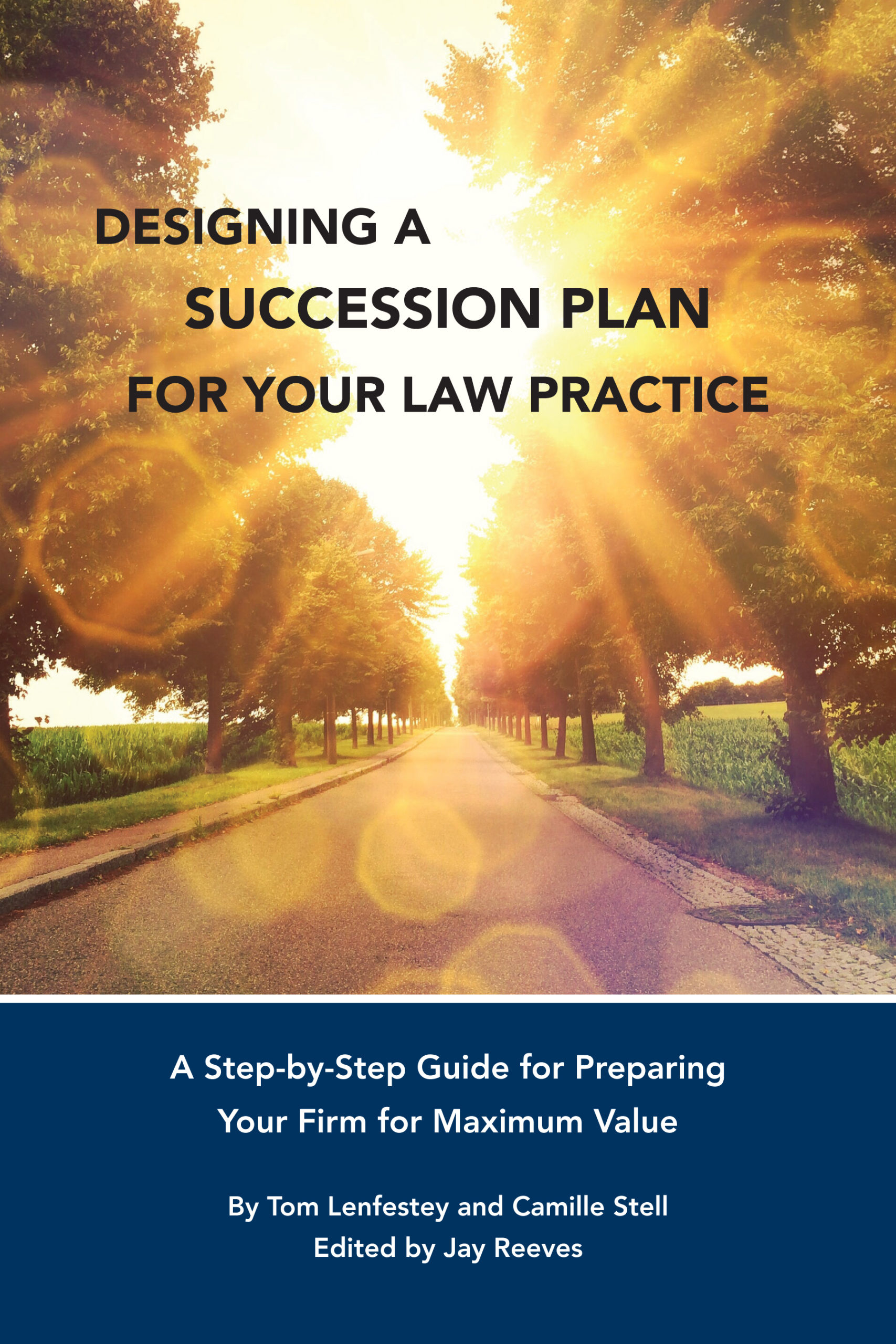
Every law practice has value, including yours.
That value is real – as in dollars and cents real – and marketable. And it may be significantly higher than you think.
Those truths are worth repeating: (1) your practice has value, which is (2) quantifiable and (3) marketable and (4) possibly greater than you think.
Valuing Your Practice
Let’s take a closer look at how to determine the value of your law practice. There are different methods to do this. For you, the “right” method will depend on the purpose of the valuation and your unique needs. Here are the basic methods:
1. Rule of Thumb method. This is actually not one set method but a variety of methods that look at past cash flows in order to estimate future value. The underlying premise is that what has happened in the past should (hopefully) continue in the future. Typically, the cash flow numbers that are examined are either Revenues or Net Income, with the latter being used in most professional and market valuations.
a) Revenues. Law practices will typically sell for a multiple of anywhere from .5 to 1.5 of average annual revenues. Therefore, a practice with average annual revenues of $500,000 may sell for anywhere from $250,000 to $750,000. That’s not a bad number – especially if you didn’t previously think your practice had any marketable value at all. The major drawback of this approach is that it doesn’t consider how well the firm is run, or how much profit/net cash flow it leaves the owner.
b) Multiple of Net Income. Law practices will typically sell for a multiple of between two to three times net earnings. Using our example from above, if that same firm has net income of $200,000, then the value may be anywhere between $400,00 to $600,000. The major drawback with this approach is it leaves out core adjustments and considerations unique to the practice that can have a big impact on what a buyer would actually pay for it.
2. Market Comparison. When it comes to buying and selling law practices, the publicly available information is limited, to say the least. There is no general database of closed transactions. Most negotiations and sales prices are confidential. But there are experts out there who have insider knowledge of the marketplace and actual sales outcomes. These experts – CPAs, law practice brokers, lawyers, lenders and others who know the law firm transfer market – are invaluable resources. Their specialized skillset comes from having handled law firm transfers over the years.
You’re familiar with real estate market analyses and comparisons. The law firm market approach works the same way. It compares your law practice characteristics (financials, practice area, geographic area, etc.) to other law practice sales that have recently closed to reach an opinion as to value. What one sold for down the street yesterday should be approximately what yours would sell for today, provided they are similar enough in core features and financials.
3. Key Value Drivers. Every law practice is unique. They’re different in a myriad of ways. The individual characteristics of your practice need to be considered as part of your valuation. Some of these factors will increase the value. Others will lower it.
The above methods will help place your practice on a valuation spectrum. To pinpoint with greater specificity where your practice is located on that spectrum, you should factor in your firm’s unique characteristics. Here are some of the primary characteristics that may cause a significant swing in value either way:
- Financial performance
- Growth potential
- Brand identity
- Size of practice
- Repetitive client revenues and fee structures
- Practice structure and owner involvement
- Client satisfaction
- Practice area
- Client diversity
- Geographic location
- Quality of employees/staff
4. Adjustments. Whatever valuation method is used, you’ll likely have to make some additional adjustments after factoring in the key drivers listed above. These adjustments will either increase or decrease your firm’s value.
Here are some of the typical adjustments law practice brokers and valuation experts use to arrive at a market price:
-
- Non-arms-length Revenues or Expenses. An example would be a higher-than-market lease payment that you pay yourself as landlord. If this payment is not within the market range, it should be adjusted downward, which will increase cash flow and practice value.
- Revenue or Expenses from Expendable Assets. An example would be a lake house or beach house that is used occasionally for employees or firm events, but most or all of its costs are paid by the practice. The house isn’t needed to run the practice, so the costs should be removed, as well as the asset itself.
- Owner Salaries and Bonuses. Owner salaries are often higher or lower than regular salary that would be paid to a replacement attorney. Adjusting as needed will have a positive or negative impact on value.
- One-Time Disputes, Recoveries and Other Non-Typical Events. Any non-recurring income or expenses that arise during the review period should be deducted.
- One-Time Professional Fees. If you paid a developer a large sum for that new software customization or hired a marketing consultant for specialized services, these one-time fees should be added back as well.
- Repairs and Maintenance. Private business owners often aggressively move what should be capital expenses into the repairs categories for tax deduction purposes. Some of these items should be added back to increase net income.
- Other Income and Expenses. This profit and loss category is the dumping ground for unclassified or ‘do not desire to classify’ expenses. Buried here are items that may need to be added back to contribute to cash flow and increase value.
The ‘It Depends’ Disclaimer
Variables are always subject to change. Which means the end result can also change. Some of these variables are unique to you and your practice, while others are external.
Excerpt from Designing A Succession Plan For Your Law Practice: A Step-by-Step Guide for Preparing Your Firm for Maximum Value by Tom Tom Lenfestey and Camille Stell. Available from Amazon
About The Author
Camille Stell

Camille Stell is the President of Lawyers Mutual Consulting & Services and the co-author of Designing A Succession Plan for Your Law Practice: A Step-by-Step Guide for Preparing and Packaging Your Firm for Maximum Value. Continue this conversation by contacting Camille at camille@lawyersmutualconsulting.com or 800.662.8843.



